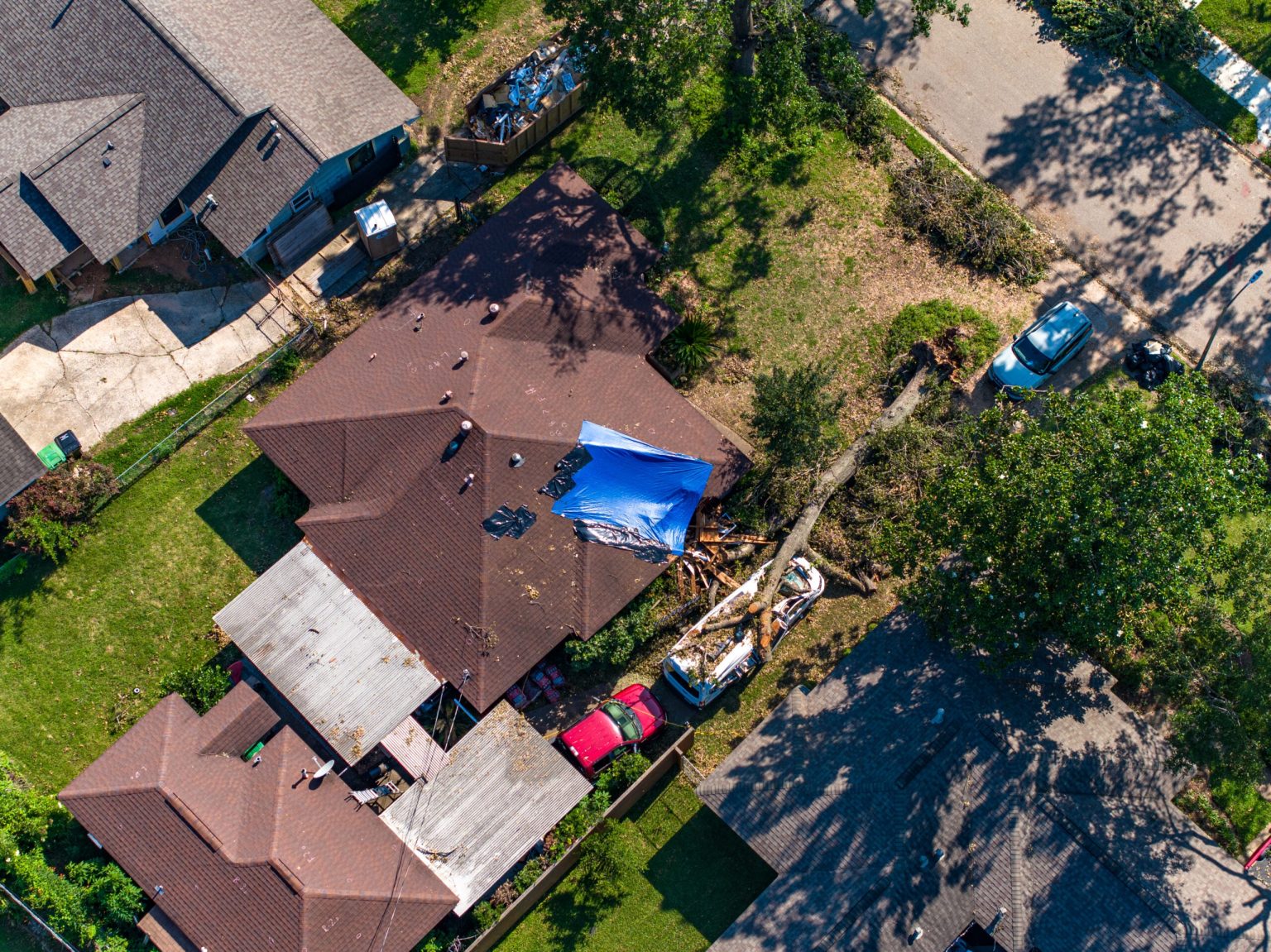The old adage “everything is bigger in Texas” isn’t always true, unless we’re talking about home insurance headaches. Texas homeowners pay some of the highest insurance premiums in the country, particularly those along the Gulf Coast. On average, Texas home insurance costs $4,049 per year for a $300K policy, around $1,700 more than the national average.
And Texas home insurance isn’t just expensive, it’s also difficult to get. Property insurance companies across the state have quietly pumped the brakes on new policies, leaving homeowners in the lurch.
The Texas home insurance crisis explained
Home insurance companies in Texas have been operating at a loss for several years. Most insurance companies measure profitability with a loss ratio, which compares dollars received in premiums to dollars paid out in claims. The five-year average loss ratio for Texas home insurance companies from 2018 to 2022 was 102 percent — meaning for every dollar taken in, insurers paid out $1.02 in claims.
Insurance companies don’t just lose money, they lose the incentive to sell more policies. Insurers, unlike utility companies, are not legally obligated to service certain homes. Most are private, for-profit businesses; if it doesn’t behoove them to write policies in one area, they don’t have to.
Homeowners who are denied policies by traditional insurance companies may have to turn to the FAIR Plan. This is a state-run program that offers last-resort coverage to people who can’t find insurance elsewhere. Coverage is fairly expensive and minimal, but for homeowners with a mortgage, a FAIR Plan policy can be a financial lifeline — one that a growing number of Texas homeowners are taking. In December 2022, the Texas Fair Plan had more than 61,000 policies in force. As of March 2024, that number has nearly doubled to more than 121,000.
Those not on the FAIR Plan haven’t found much reprieve, either. Home insurance costs in the private market have also gone up in Texas. In June 2022, a home insurance policy in Texas cost an average of $3,635 per year. By June 2025, the same policy cost an average of $4,049 annually.
More people, more claims
Since 2020, Texas has gained more than 2 million residents, making it the fastest-growing state in the country. In 2024, half a million new residents moved to the Lone Star State, the bulk of whom settled in suburbs outside of Dallas, Fort Worth, San Antonio, Austin and Houston. Californians comprised a significant number of these transplants, with job-seekers putting down roots in and around cities for new work opportunities, a lower cost of living and no state income tax.
As Texas’ population ballooned, so did insurers’ liability claims, says Jessica McNally, a Dallas-based agent with Goosehead Insurance. “These are claims insurers didn’t know to prepare for… They’re usually accounted for, but they increased more,” she says.
Liability insurance claims can be some of the most expensive and can quickly balloon into six- and seven-figure territory. When your insurance company pays out a liability claim, they’re covering a slew of different expenses that can include medical bills, lawyer fees, lost wages, property damage and pain and suffering.
Extreme weather and Texas home insurance
Texans face extreme weather on multiple fronts. Hail, hurricanes and tornadoes pose major threats to homeowners and insurance companies alike. Cotality’s 2025 Severe Convective Storm Report found that Texas has the largest number of homes at moderate or higher risk for hail and tornado damage, with most at-risk homes concentrated in Houston and Dallas. Texas trails Florida for the number of homes vulnerable to hurricane-force winds and ranked sixth for the most homes at risk from storm surges.
Insurers can move fast in Texas, but perhaps not fast enough
Each state differs in how it regulates insurance prices. Most states use some version of a file-and-use system, which means insurance companies can use newly proposed rates right away, without waiting for the approval of the Texas Insurance Department. Texas is a file-and-use state, but this doesn’t mean insurers have the freedom to charge whatever they’d like. Per Texas law, rates must be adequate based on actuarial principles and non-discriminatory.
The logic behind a file-and-use system is that it allows insurance companies to respond faster to loss trends, according to the Property Casualty Insurers Association of America. When insurance companies pay out widespread, catastrophic claims, it can quickly deplete their reserves. Allowing insurance companies to use new rates right away, as opposed to waiting for approval from the Texas Department of Insurance allows them to recoup the lost money faster — at least in theory.
When facing record-setting losses, insurance companies strain to keep up with the massive payouts. 2024’s Hurricane Beryl threw the property and casualty industry into turmoil, with estimated insured losses hovering around $2.5 to $4.5 billion. Insurance companies anticipate losses every hurricane season, but they weren’t prepared for the extent of Beryl, says McNally.
Many have yet to catch up after the financial fallout. The Texas Windstorm Insurance Association (TWIA) — which covers more than 50 percent of wind and hail exposure in designated catastrophe areas — began the 2025 fiscal year with a $413.5 billion deficit. In striking contrast, it began 2024 with a nearly $46 million surplus.
How to find affordable Texas home insurance
Finding a home insurance policy in Texas can be challenging, especially when insurers are flirting with leaving the state and placing heavy limits on how many new policies they’ll extend. McNally’s number one piece of advice for Texas homeowners? If you find a good price, lock it in.
“You don’t know what’s going to happen tomorrow,” McNally says.
She also suggests that homeowners work with an independent agent or broker over a captive insurance agent. A captive agent works for just one company, while independent agents and brokers work with multiple companies. They can cast a wider net, so to speak, and help you find a company willing to work with you.
Speaking to an expert who knows what you have on your policy is the most important thing… That way, you can understand your policy better and get help tailoring your coverage.
— Jessica McNally
Licensed insurance agent, Goosehead Insurance
Why we ask for feedback
Your feedback helps us improve our content and services. It takes less than a minute to
complete.
Your responses are anonymous and will only be used for improving our website.
Help us improve our content
Read the full article here












